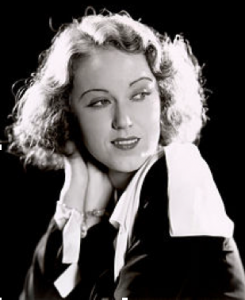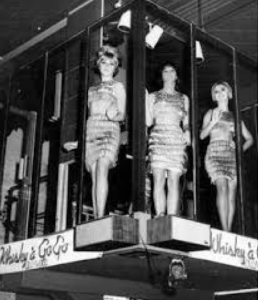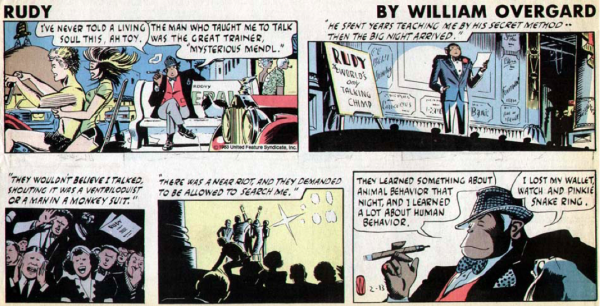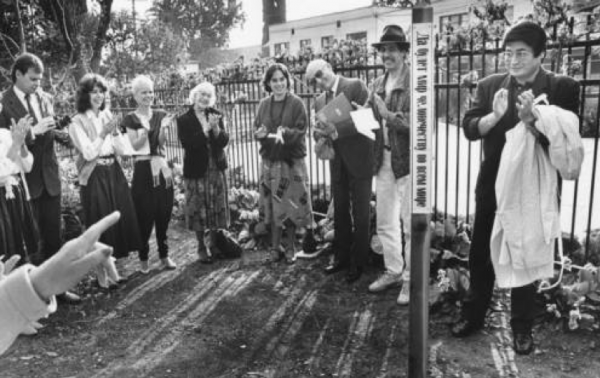We’ve uncovered four more lesser-known facts about West Hollywood’s history to join those published by WEHOville.com Aug. 14, 2018. See if you’ve heard of them.
1. Extortion Attempt Against Actress Fay Wray
Fay Wray – the Canadian-American motion picture actress best known for starring as Ann Darrow in the 1933 film “King Kong” – was the intended victim of a bold extortion attempt that played out at the southwest corner of Sunset Boulevard and Laurel Avenue, a few hundred feet north of the current WeHo border, 90 years ago in July 1928.

She was handed a note at her home in Hollywood July 14, 1928, that stated, “Quiet is necessary to save dear old mother at once today, Saturday the fourteenth. Mum!” according to an account published the next day by the Los Angeles Examiner. The envelope contained the following grim message, crudely printed in pencil: “Say the life of your mother is in great danger and only the payment of $2,000 will save her life. She is being watched constantly. Don’t be foolish or call the police. In fact, don’t tell a soul of this. Follow instructions and she will not be harmed.”
Wray was told to wrap cash in assorted currencies in a newspaper and leave it in some weeds in a then-vacant lot at the corner of Sunset and Laurel. The actress immediately notified the police, who assigned several detectives to stake out the lot at the appointed drop time. She threw a decoy package from her car as she drove by the lot in the specified location. A short time later, a suspect got out of his car, scanned the weeds and picked up the package.
As detectives rushed the man – a childhood schoolmate of Wray identified as Lyon I. Bernard, 35 – he fired a single shot from a pistol at one of the detectives, missing him. When Bernard was taken into custody, he told police, “I was broke. I knew Miss Wray in her schooldays. I went to school with her brother and sister back in Bingham Canyon, Utah. I knew she deeply loved her mother. I thought I could get away with it.”
The $2,000 he demanded amounts to about $28,500 in today’s currency, according to the website savings.org. As the old saying goes, if you’re going to steal anything, steal a lot. The penalty is the same regardless. A complete account can be found at Allen Ellenberger’s Hollywood.com website.
2. When Women’s Empowerment Wore a Go-Go Skirt
That’s the title of an essay published by none other than the Wall Street Journal on April 7. The piece recalls that when go-go dancing was born at the Whisky A Go Go in January 1964, feminists were quick to embrace the trend as helping to empower women.

“At the Whisky,” the essay notes, “go-go dancing not only leveled the playing field but tilted it slightly in women’s favor. Women could dance alone or with female friends.” They didn’t need a man if they wanted to dance.
“Word traveled fast. By the spring of 1964, the club had become a full-blown scene, with young movie stars and recording artists mingling with models and dancers. Even the Beatles showed up that August,” the essay continues. “Before long, the paparazzi turned the Whisky into an epicenter of cool. That fall, the go-go concept was copied by dance clubs across the country.”
The perception of young women blending elements of the frug, the watusi, the skate, the bougaloo and other seductive freestyle dances while gyrating in cages suspended from the ceiling changed a few years later, however, with the onset of the Women’s Liberation Movement. The Journal’s essay notes that almost overnight, go-go dancing came to be viewed as objectifying women, and the trend faded away.

3. “Rudy” Cartoon Strip Was about the Garden of Allah
“Rudy” was a cartoon strip featured in the comic sections of newspapers across the country from January 1983 to December 1985. The title character was a talking chimpanzee whose humor came from his interactions with entertainment industry hangers-on, agents of questionable character and an endless string of Hollywood oddballs and weirdos. Think of him as sort of like George Burns in “The Sunshine Boys” and you’ll have the general gist of the strip.
The creation of veteran cartoonist William Overgard, “Rudy” featured smart humor by a driven character. A little-known aspect today is that the cartoon strip was set at a “present day” (for the 1980s) Garden of Allah apartments, the legendary home and playground to many Hollywood stars. Formerly located on Sunset Boulevard at Crescent Heights Boulevard, the apartments had been demolished long before the cartoon was published.
By all accounts, the strip was too urbane for most audiences, which accounts for its relatively short run by its distributor, United Features Syndicate.

4. Plummer Park’s ‘Peace Pole’
There’s a “peace pole” at Plummer Park that’s intended to act as a silent prayer and message for peace on Earth. Erected Feb. 22, 1988, the peace pole is an idea promoted by the Society of Prayer for World Peace, a nonprofit, nondenominational organization based in Ichikawa City, Chiba Prefecture, Japan.
The society’s slogan – “May Peace Prevail on Earth” – appears in various languages on thousands of these poles placed around the world. Peace poles are hand-crafted, four-sided, wooden monuments about seven feet tall that display the message in different languages of the world.
When the pole at Plummer Park was unveiled, the group described itself as a “positive and stable element in support of the UNESCO Decade for the Culture of Peace.” That was in the 1980s. Draw your own conclusions about how the harmonic convergence of all these peace poles is working out.

It was very courageous of the Great City of West Hollywood to have “Peace Poles” in the late 80’s at the peak of one of America’s most reactionary administrations in history, almost as bad as the one appointed by the Electoral College that currently occupies the position! We should make and put up some more “Peace Poles” as a “positive and stable element in support of the UNESCO Decade for the Culture of Peace” in this time of imperialism and domestic suppression of Civil Rights. ☮️
Distributing more Peace Poles might be more effective than the silly little temporary parklets. Green some of the vacant areas and create opportunities for quiet meditation. Micro Green Spaces+ Peace Pole=Less Aggression!
Great to learn more about WEHO. Love the GoGo article. Thank you.
Very cool, there also used to be a Peace Pole outside the Bodhi Tree used book store on Westbourne at Melrose before Melrose got annexed by Rodeo Drive.
Funny, yet sad isn’t it?
Yes, more the latter than the former, but yes.
Interesting. Thanks for the article.